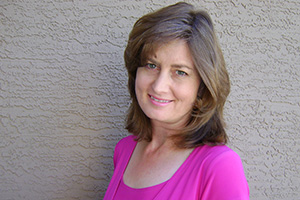So, there we were, on the day after Thanksgiving, hefting bulky boxes out of storage in order to set up the Christmas tree.
First to get unpacked was the Nativity set my mother bought in 1976 on a family day trip to Nogales, Mexico. She gave me the precious heirloom years later when I got married and moved into a one-room apartment with my husband. More than any other item, that Nativity scene is what I treasure most from our patchwork of Christmas décor. Ornaments shatter, strands of lights fail, but somehow, the delicate créche has survived three moves and a houseful of kids, year after year.
As I carefully unwrap the 4-inch figures from faded tissue paper each November, I think back to the day my mother and I spied them in one of the many small shops that dot the crowded streets of Nogales.

“You break it, you buy it,” announced a handwritten note tapped to the shelf.
We carried the Holy Family and Magi figures like gold all the way back down the dusty street, to the restaurant, and finally to the station wagon and back home. Nearly four decades later, they’ve found their way to a small wooden table in the corner of our living room.
What’s unique about this Nativity set is that the figures are depicted as small children, much like the artwork of the famous Spanish artist, Juan Ferrandiz. There’s a tenderness, a sweetness about them, that captures your heart the way a little child does.
And isn’t that really the whole point of Christmas?
The Child Jesus enters our broken, fallen world with His purity and innocence and fragility. He is born in the most humble of circumstances, in a temporary shelter, among sheep and oxen, and laid in a manger. He shed His first drop of blood for us eight days later at His circumcision, a foretelling of the blood that would flow from the terrible wounds of crucifixion.
The rest of us, we live our lives not knowing what the future holds. By contrast, the Child Jesus came into our world, fully aware that He would live a life of poverty and hardship and would ultimately suffer a fearful passion and death, all to set us free from our sins.
“Whoever does not receive the kingdom of God like a child shall not enter it,” Jesus tells His followers. The Nativity set, with its childlike figures, reminds me of that verse.
It’s certainly a contradiction to what we see going on all around us in our increasingly secularized, post-Christian society.
I discussed that observation with Kay Allen, the former director of 1st Way Pregnancy Center who is now living in Belize as a missionary. Home in Phoenix for a short visit over the Thanksgiving holiday, I asked her what the United States looked like to her after spending 16 months in a developing country. I was curious, because after spending time overseas myself, I saw this country with new eyes.
“There’s a lot of waste,” she observed. “And television — terrible stuff!”
After not watching American programming for so long, the trashiness of prime-time shows sent a shockwave through her.
Little by little, many of us have become accustomed to, or even jaded by, the pagan world in which we reside — a place not unlike the Roman Empire into which Jesus Himself was born.
And yet each Advent offers us the opportunity to approach the cradle of the Savior with repentant, humbled hearts, in awe of the gift of His love, His courage in entering our wounded world to show us how to live and how to trust in God’s providence.
Let us stand apart from the noise and consumerism that so often mar this holy season. Kneeling at the cradle, let us accept the Lord’s invitation to love and to receive His kingdom like little children, trusting in their Father’s love. It is then that the peace of Christ — and Christmas — will take residence in our hearts.






